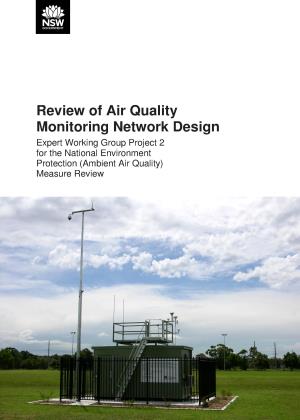Legislative context for the review
The design of Australian air quality monitoring networks, and the measurement and reporting of air quality is guided by the National Environment Protection (Ambient Air Quality) Measure (AAQ NEPM), made under the National Environment Protection Council Act 1994 (Cth) (NEPC Act).
The AAQ NEPM was first reviewed in 2011. In 2015, an Expert Working Group (EWG) made of representatives from participating Australian jurisdictions was tasked with progressing technical recommendations from the AAQ NEPM review, grouped by projects. Commencing 2015, EWG Project 2 assessed the feasibility of executing Recommendations 10 and 11 of the AAQ NEPM review.
- Recommendation 10: Redesign monitoring networks to represent population exposure on a pollutant-by-pollutant basis without compromising data collection for long-term trend analysis. A procedure to determine the location and number of sites similar to the European Union (EU) and/or United States Environmental Protection Agency (US EPA) is recommended.
- Recommendation 11: Remove the population threshold and formula to enable monitoring on potential population risk rather than on population size.
Who was involved in the review?
The national review of Australian air quality monitoring networks (EWG Project 2) was led by the former NSW Office of Environment and Heritage (OEH), overseen by an interagency project group comprising representatives from Victorian, South Australian and Queensland environment agencies.
The terms of reference for the review were developed in consultation with an external Stakeholder Advisory Panel with representatives from the following disciplines: air quality research; environmental health research; community engagement; air quality monitoring practitioners from other jurisdictions, and the NSW Office of the Chief Scientist & Engineer.
An independent consultancy was engaged to conduct the review.
What were the outputs from the review?
The independent review occurred in two streams:
- Current Australian guidance on the design of air quality monitoring networks, as implemented by Australian jurisdictions was reviewed: Review of Australian Air Quality Monitoring Networks.
- Best practice principles that underpin the design of air quality monitoring networks internationally was reviewed: International Best Practice in Air Quality Monitoring Network Design.
The Expert Working Group consolidated these independent reviews into an updated guidance: Review of Air Quality Monitoring Network Design.
Review outcomes
Findings and recommendations from the National Environment Protection Measure Expert Working Group Project 2.



